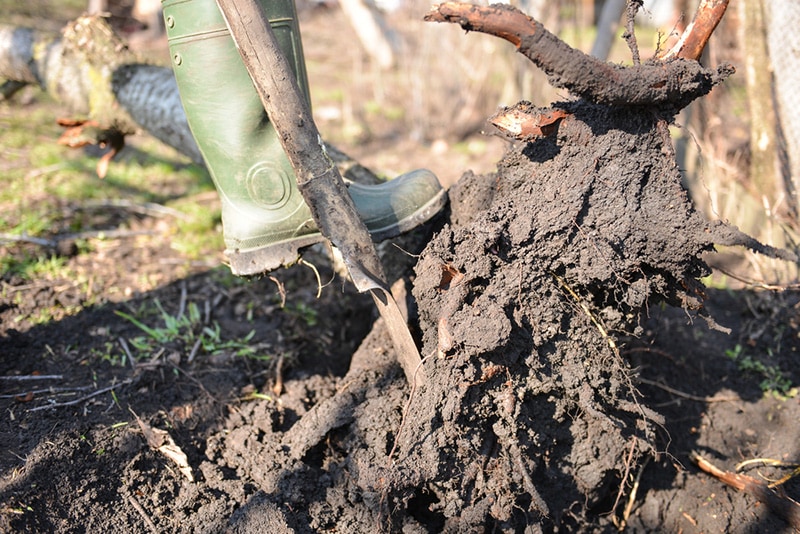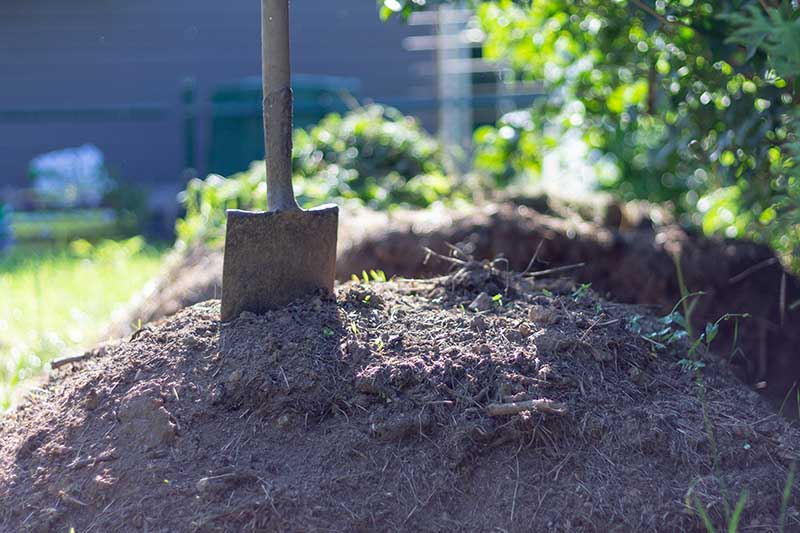How to Get Rid of Tree Roots in Your Lawn (3 Expert Tips)
-
Ashley Bates
- Last updated:

You likely love the trees in your yard, as they give your landscape a beautiful aesthetic and add to the protection of the wildlife in your area. But if you are trying to do landscapes, you might notice exposed tree roots extending out from the trunk.
While this might not bother some people, tree roots can become problematic for several reasons. So if you’re tired of stubbing your toes or running over roots with a lawnmower, here are 3 ways you can eliminate visible tree roots in your yard.
The 3 Tips to Get Rid of Tree Roots in Your Lawn
1. Add Mulch

The best method to take care of exposed tree roots is to put a light, aerated substance on top of them to prevent exposure but allow proper aeration and oxygen flow.
Never put soil over the tree roots, as this can suffocate the roots. The soil can become too tightly compacted, which is not good for your tree’s root system. Instead, choose mulch to sprinkle over the top.
- Mark off the territory
- Reduces foot traffic
- Creates a more aesthetically pleasing look
- Insulates and cushions roots
Mulch can scatter quite easily, so it is important to maintain the area. It’s best to use organic material such as wood chips and spread it in layers roughly 3 to 4 inches deep.
Try to keep mulch away from the base of the tree, as this can cause root rot and damage. Adding mulch is a natural way to preserve the tree’s integrity without damaging the structure.
However, due to location, there might be better options in your scenario.
2. Carefully Remove the Exposed Roots
If you choose to remove the roots, you need to be careful. If you cut incorrectly, you could damage or even kill the tree. The root systems are incredibly important and need to stay healthy. On average, you can only cut roughly 15% of the tree roots at one time.
Removing all sod from around the root is crucial so you can access it appropriately. Before taking action, you will need to measure and get a good look at what you’re working with.
Measure the diameter of the roots before you cut. They need to be approximately 2 inches or less in diameter. Carefully mark the area you will cut and dig to expose the root fully. You can efficiently cut the exposed root if you have a pruning saw on hand.
After you cut away the exposed root, refill the area with dirt.
Keep an eye on your tree for several signs of trouble, including yellowing leaves or dying branches. Call a professional immediately for additional solutions if your tree appears to be in distress.
3. Hire a Tree Specialist

While this might be the most expensive option, it can be well worth it for you. Because it’s so easy to damage the livelihood of the tree by negatively impacting the root system, it might be best to get a professional.
Tree specialists, or arborists, can assess the situation and respond accordingly. They have all of the resources and equipment necessary to take care of troublesome roots growing out of the ground.
They can also ensure that your trees stay safe and the best measures are taken to reduce potential damage.
Options for tree specialists will differ depending on your area. You can look nearby to compare rates and choose the company you feel the most confident in.
Reasons for Exposed Roots
Most of the time, tree roots grow downward in the soil. It is normal to see a few tree roots close to the tree itself. However, if you notice tree roots that extend far away from the trunk, it could be a sign of a problem.
So if you suddenly notice your tree’s roots protruding more and more, here are some causes:
Soil Erosion
Soil erosion due to standing water, heavy rain, and weather can cause route exposure. If an area does not drain properly, you might notice a lot more roots around the yard.

Lack of Growth Space
Sometimes it’s hard to comprehend how fast the tree’s root system can grow. Even if you think a tree has a substantial amount of room to grow, that might only sometimes be the case.
Due to lack of ground space, it can cause roots to surface slightly to try to compensate. Some examples of this would be sidewalks, buildings and structures, and pipes that could encourage the roots to grow upward.
Travel Wear and Tear
Roots can get exposed quite easily when an area is a traveled pathway for feet. That is because continually walking along the surface breaks down the soil that typically protects the root system.
What Not to Do
We don’t recommend taking any extreme measures on your own if you don’t have sufficient experience. Sometimes, folks take it upon themselves to use harsh chemicals and other efforts to get rid of the roots. However, it can be detrimental to the tree in question.
Also, using chemicals in the ground can affect more than just the tree root, leaching into other areas. So, before you take extreme measures to remove roots, always consult a professional for guidance.
Conclusion
Getting rid of roots might be easier than you think. After all, most fixes include putting a sufficient amount of well-draining mulch on the affected area to protect it. However, if you run into a more complicated situation, you should contact an arborist for help.
Not only do they have all the fancy tools to take care of troublesome cases, but they are also much more likely to save the tree from permanent decline.
Featured Image Credit: zephylwer0, Pixabay
Contents

